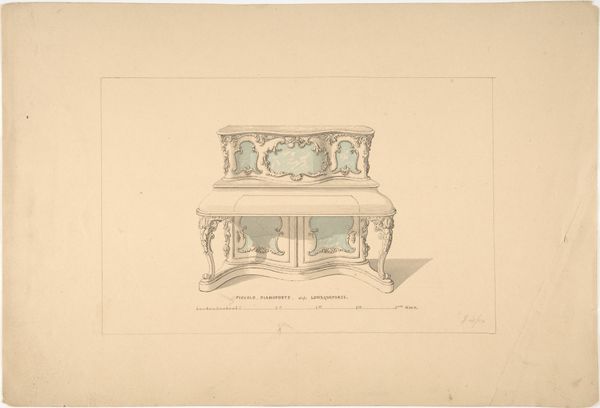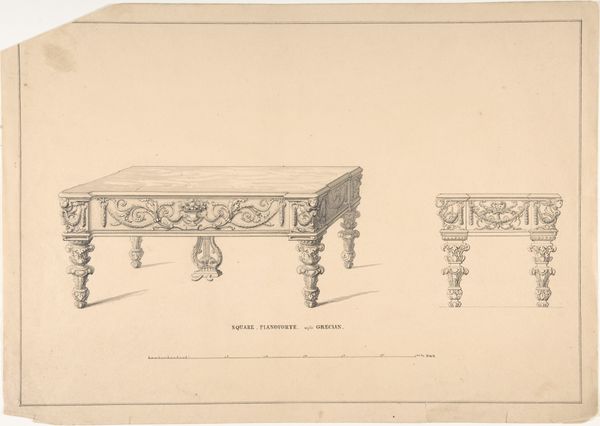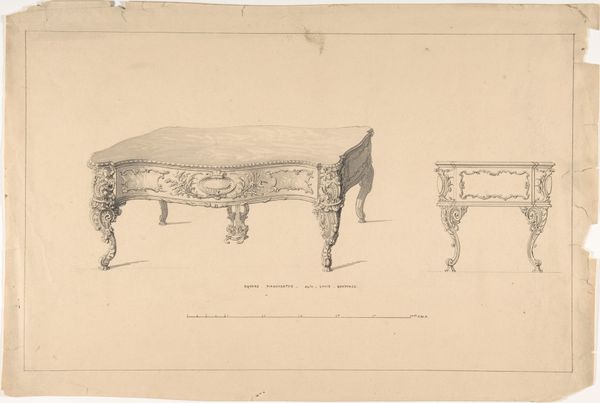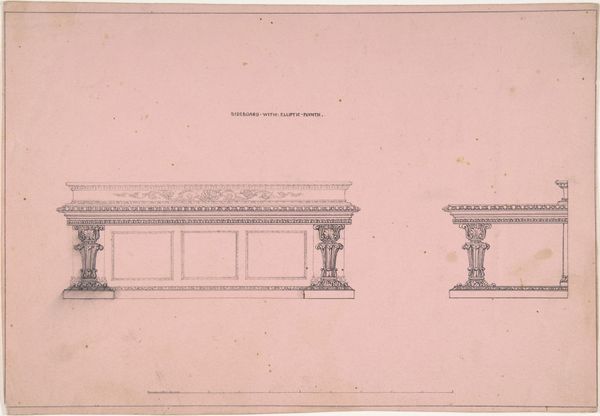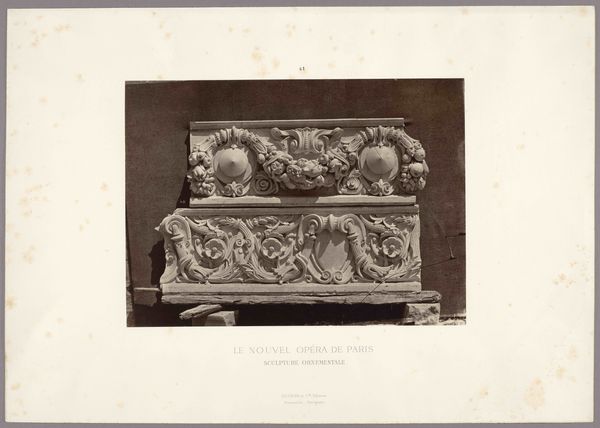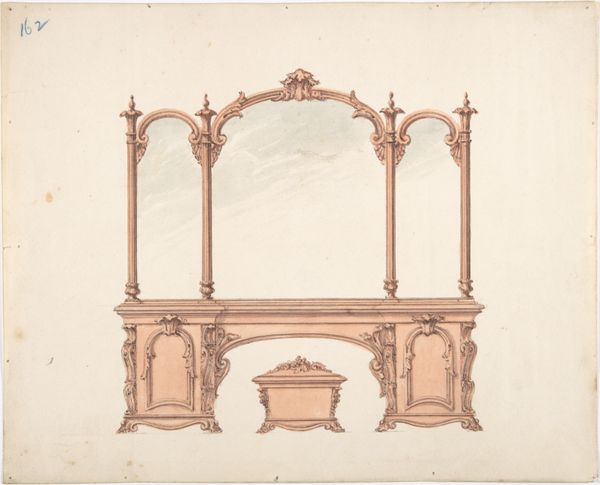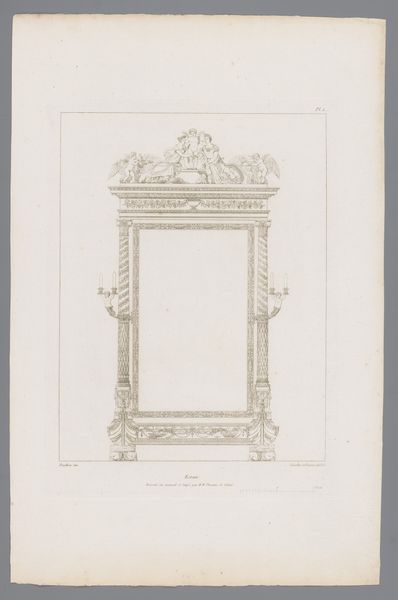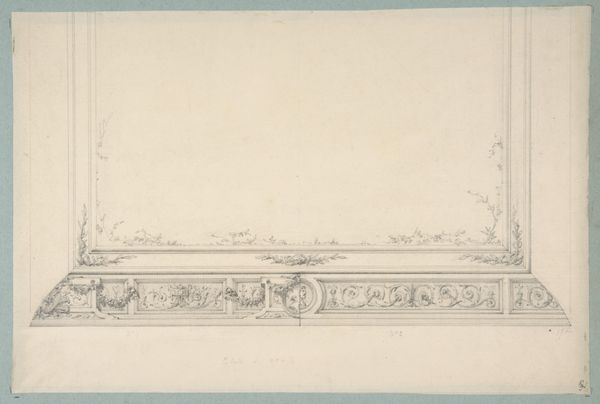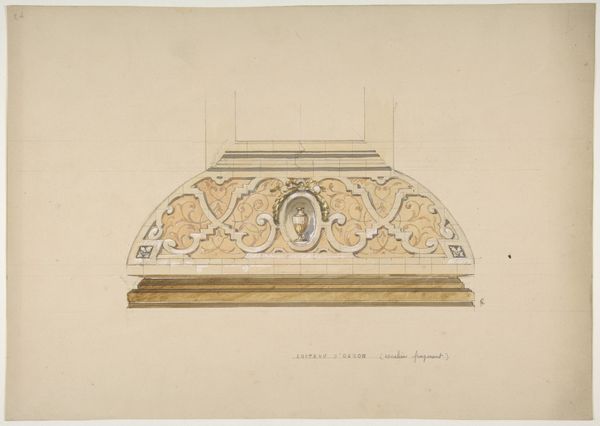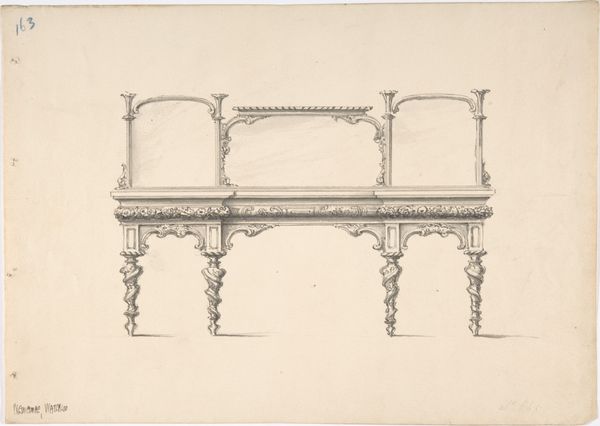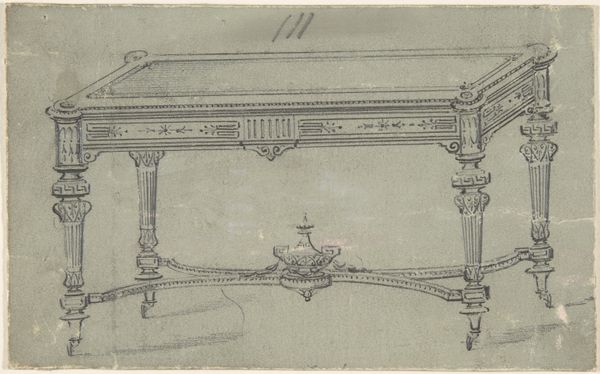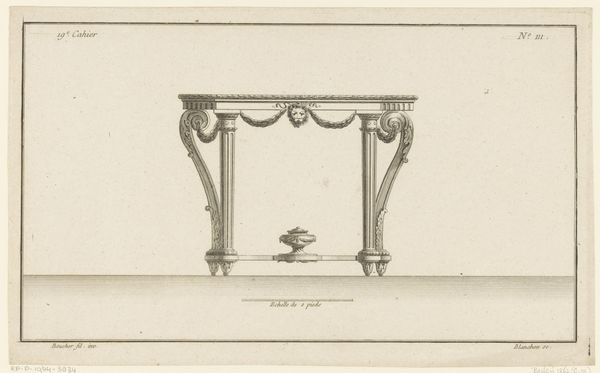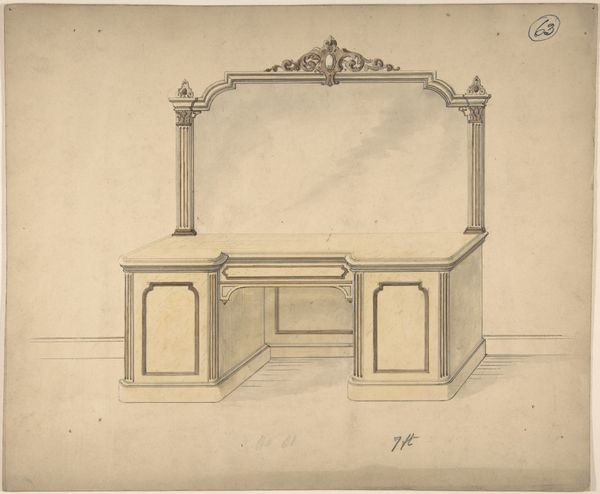
Design for Sideboard, Louis Quatorze Style 1835 - 1900
0:00
0:00
Copyright: Public Domain
Curator: The drawing we're observing is entitled "Design for Sideboard, Louis Quatorze Style." Attributed to Robert William Hume, it likely dates from between 1835 and 1900. Hume rendered this design using pencil and print, capturing an object deeply rooted in decorative art. Editor: My first impression is one of incredibly intricate, almost dizzying ornamentation. The sideboard appears opulent, perhaps even flamboyant. I'm immediately drawn to the contrasting textures suggested by the lines and the interplay of light and shadow. Curator: It’s true. The Louis Quatorze style, also known as Louis XIV, represented the apex of French baroque under the Sun King. But this is not Louis XIV era! Hume is pulling from a past connected to notions of royal power in times when ideas about this changed dramatically, especially when designs of this nature found their way into middle class houses through industrial production. Editor: The recurring motifs—the shells, floral patterns, and scrolls—create a visual rhythm. The sideboard's silhouette feels surprisingly balanced despite the profusion of detail. It almost looks as if there is some sort of symbolic visual language taking place. What’s that top piece mean? What does it represent? Curator: These types of flourishes showcase how style was as much about visual experience as it was about the cultural display of wealth and good taste. The application of neoclassical themes here in terms of decoration suggest power, and knowledge of power in this particular historic revival in interior decorating. This object, designed by Hume, illustrates the changing nature of politics by bringing royalty inside of more and more people's homes, changing popular awareness around art itself. Editor: Hume’s work creates this fantastic balance of line and tone that keeps it cohesive. The use of geometric structure beneath all that detailing and ornament grounds it in a very real way, I suppose. It is the heart and soul of formal visual construction! Curator: That’s an apt point to bring up because this object would not be understandable to the populations of Europe without that type of knowledge becoming more widespread. Robert Hume’s objects have become very impactful at this point for similar reasons. Editor: Ultimately, this piece, considered through line and the language of visual structure gives insight into not only formal features but also an access point into deeper understandings. Curator: A keen reminder of the social importance in even ornamental drawings, thanks to its wide reception in society back then.
Comments
No comments
Be the first to comment and join the conversation on the ultimate creative platform.
